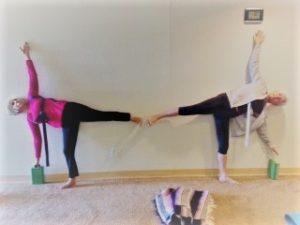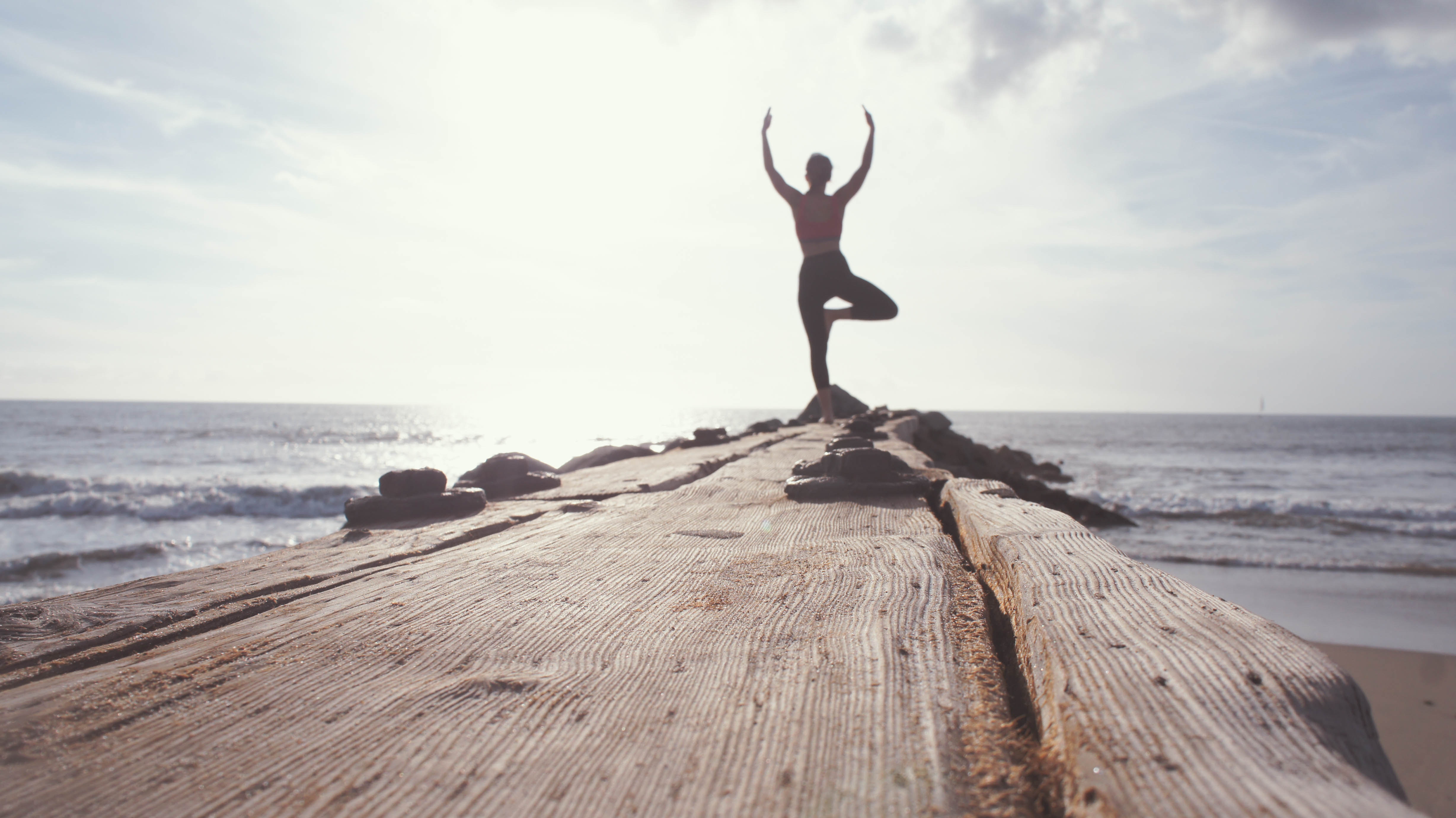By: Ingrid Wentzel, M.S.
Body Positive Personal Training Studio
Many students and clients come to me with a few misconceptions about yoga. One is the idea that doing yoga is all about being or becoming more flexible, but that’s just part of the story. What most of us think of as yoga is a collection of physical postures (or asanas) under the umbrella of Hatha yoga. Their purpose is to align skin, muscles and bones, creating a balance of strength and flexibility. They also open and stretch the spine so that energy can flow more freely. What makes yoga different from other forms of physical exercise is attention to the breath. This helps us to quiet the meanderings of the mind, and to be more present in each moment. Breathing and being present with our own experience leads to greater self-acceptance and less self-judgement as we practice. So, the amount of flexibility you have or don’t have is not the most important thing anymore. That being said, doing yoga on a regular basis actually does make you more stretchy. Check out this study on the physical fitness benefits of practicing three times a week.
https://www.acefitness.org/getfit/studies/YogaStudy2005.pdf
The other large misconception about yoga is that it is a religion, or requires adopting or changing beliefs in order to participate. Many base this on the traditional yoga closing salutation, “namaste,” usually done with hands in prayer position. Namaste literally means “I bow to you,” and acknowledges the Divine spark, soul, or simply human similarities we all share. The tradition of yoga has been around for 5000 years or so, and originated in India. The practices and philosophies around the practice were collected into lessons, or sutras, which were written in Sanskrit about 2000 years ago. Hence the use of Sanskrit names for yoga poses. There has been a lot of time for different branches and belief systems to spring forth, and you can find as many different styles of yoga and teaching as there are teachers. Not all teachers use Sanskrit (I’m one of those), while some use chanting, meditation, and breath work and others do not.
Also, yoga asanas are just one of eight separate areas (or limbs) of yoga that include philosophies for health, living with others and achieving higher states of consciousness. More: https://www.yogajournal.com/meditation/yoga-questions-answered. Many studios offer opportunities to delve deeper into these areas should you so desire.
If you’re looking for a yoga class to try, most studios offer a free introductory class and many offer beginner packages for first time students. What should you look for? I think the most important part is feeling comfortable and welcome. After that, is there a particular emphasis you want, such as yoga to support or enhance cycling or other athletics? A smaller class gives the instructor more time for each student. There should be time for questions and options given for poses so everyone can perform them to their abilities. Whether a class is large or small, to do yoga safely in a class setting, the tone should be one of accepting individual differences, going with the feeling rather than the look of poses, and non-competitiveness. And if you’re looking to find out more on your own terms, there are a number of web based yoga channels and YouTube stations.
 I like students to have fun with yoga, especially with unfamiliar movements and challenges that can make many of us feel awkward. I like to create an environment where we can be silly, try new things (and sometimes fail), and know there will be better (and worse) days. Honestly, this often leads to not doing everything I had planned for a class, or changing the pace to spend more time on moves that people want to work on. This kind of flexibility in where the class (or your personal session) goes is at the heart of yoga. Whether doing yoga on your own or in a group, maintaining a sense of being present with your own sensations and, sometimes, emotions, is a way to get the most out of it, and possibly even grow and change.
I like students to have fun with yoga, especially with unfamiliar movements and challenges that can make many of us feel awkward. I like to create an environment where we can be silly, try new things (and sometimes fail), and know there will be better (and worse) days. Honestly, this often leads to not doing everything I had planned for a class, or changing the pace to spend more time on moves that people want to work on. This kind of flexibility in where the class (or your personal session) goes is at the heart of yoga. Whether doing yoga on your own or in a group, maintaining a sense of being present with your own sensations and, sometimes, emotions, is a way to get the most out of it, and possibly even grow and change.



